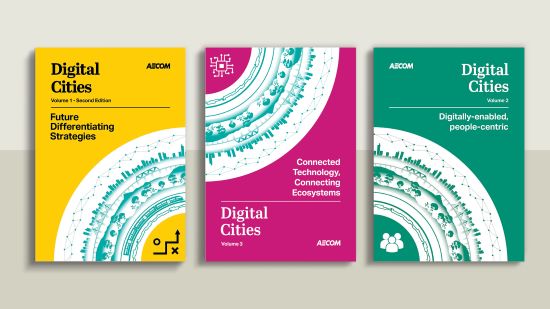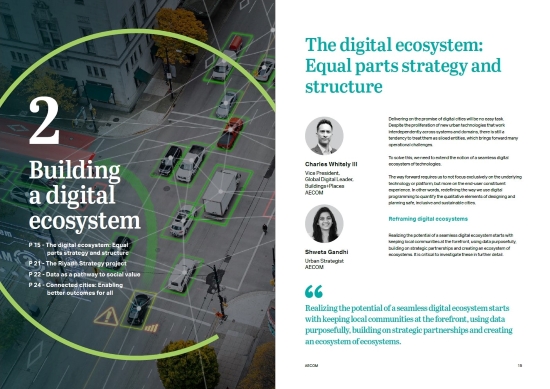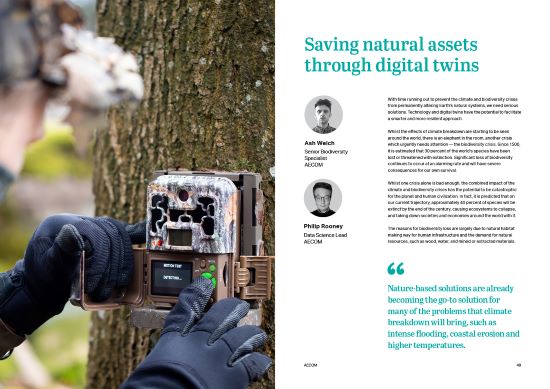2023-03-31
AECOM Launches “Digital Cities: Connected Technology, Connecting Ecosystems” Report - Exploring How Digital Technology Applications Can Build Sustainable Cities

Written by experts and leaders from AECOM’s five regions and influential partners, including DesignSingapore Council and World Council on City Data, the “Digital Cities: Connected Technology, Connecting Ecosystems” report deep-dives into how we can develop strategies to create cities of the future. With a digital ecosystem that integrates climate twin, biodiversity twin and planning twin, we can harness data on our cities’ carbon footprint and assess climate risk, to achieve ESG goals related to climate impact, ecosystem diversity and decarbonisation, and assist public sector leaders to make informed decisions.
This is the third installment of AECOM’s four-part series on unlocking the potential of digital technology — the first of which highlighted the role that strategy plays in planning and managing digital cities, and the second, the importance of a people-centric approach to ensure the city benefits all.
“Digital Cities: Connected Technology, Connecting Ecosystems” expands on these and presents how an integrated approach is crucial in the development of a digital city. Various technologies, data, platforms and providers all play roles in creating a digital ecosystem that becomes a vital part of a city’s infrastructure.
This is the third installment of AECOM’s four-part series on unlocking the potential of digital technology — the first of which highlighted the role that strategy plays in planning and managing digital cities, and the second, the importance of a people-centric approach to ensure the city benefits all.
“Digital Cities: Connected Technology, Connecting Ecosystems” expands on these and presents how an integrated approach is crucial in the development of a digital city. Various technologies, data, platforms and providers all play roles in creating a digital ecosystem that becomes a vital part of a city’s infrastructure.

In the chapter “The digital ecosystem: Equal parts strategy and structure,” the notion of a seamless digital ecosystem of technologies is extended to keeping local communities at the forefront, using data purposefully, building on strategic partnerships and creating an ecosystem of ecosystems. Authors cite how delivering on the promise of digital cities requires prioritizing end-user constituent experience above technology or platform and redefining the way we use digital programming to quantify the qualitative elements of designing and planning safe, inclusive and sustainable cities.

Going beyond the built environment, digital technology also holds great potential in transforming our natural world. The article “Saving natural assets through digital twins” discusses how digital twins, or digital representations of our physical environment, can aid and complement nature-based solutions (NbS) in conserving our natural ecosystems. Like in digital cities, 3D modelling, artificial intelligence, and real-time data can also support engineers, environmentalists, and other stakeholders in assessing natural landscapes, studying ecosystems, predicting natural phenomena, and ultimately making strategic decisions and reducing risks in projects.
Download “Digital Cities: Connected Technology, Connecting Ecosystems” now to learn more.
Download “Digital Cities: Connected Technology, Connecting Ecosystems” now to learn more.